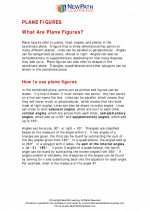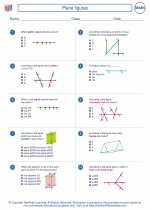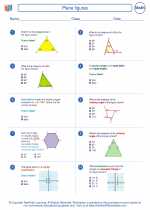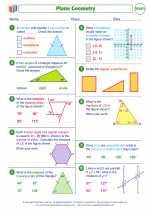Repetitive Patterns
In mathematics, a repetitive pattern is a sequence of elements that repeats in a predictable manner. These patterns can be found in various areas of math, such as algebra, geometry, and number theory. Understanding and identifying repetitive patterns is an important skill that helps students develop their logical reasoning and problem-solving abilities.
Types of Repetitive Patterns
There are several types of repetitive patterns, including:
- Geometric Patterns: These patterns involve a sequence of shapes or designs that repeat in a specific way, such as a checkerboard pattern or a sequence of nested squares.
- Numeric Patterns: These patterns involve a sequence of numbers that follow a specific rule or formula, such as arithmetic sequences or geometric sequences.
- Algebraic Patterns: These patterns involve a sequence of algebraic expressions or equations that exhibit a recurring structure, such as the Fibonacci sequence or Pascal's triangle.
Identifying and Analyzing Repetitive Patterns
To identify and analyze repetitive patterns, students can use various strategies and tools, including:
- Visual Representation: Drawing or visualizing the pattern can help students see the repetition and understand how the elements are related to each other.
- Creating Tables: Organizing the elements of the pattern into a table can help students identify the relationships and patterns more easily.
- Using Formulas: For numeric or algebraic patterns, students can look for a formula or rule that describes how the elements of the pattern are generated.
- Extending the Pattern: Predicting and extending the pattern can help students test their understanding and make conjectures about the pattern's behavior.
Applications of Repetitive Patterns
Repetitive patterns are not only important in mathematics, but they also have practical applications in various fields, including:
- Art and Design: Many artistic and design elements are based on repetitive patterns, such as tessellations and decorative motifs.
- Computer Science: Repetitive patterns are used in algorithms and data structures, such as pattern matching in text processing and image recognition.
- Nature and Science: Many natural phenomena and scientific processes exhibit repetitive patterns, such as the spiral patterns in sunflowers and the periodic table in chemistry.
Study Guide
To study and practice repetitive patterns, students can follow these steps:
- Review the different types of repetitive patterns and examples of each type.
- Practice identifying and analyzing repetitive patterns using visual representations, tables, and formulas.
- Explore real-world examples of repetitive patterns in art, nature, and science to understand their significance and applications.
- Challenge yourself with pattern extension problems and puzzles to strengthen your pattern recognition skills.
- Discuss and compare different strategies for identifying and analyzing repetitive patterns with your peers or teachers.
By mastering the concept of repetitive patterns, students can enhance their problem-solving skills and deepen their understanding of mathematical structures and relationships.
[Repetitive Patterns] Related Worksheets and Study Guides:
.◂Math Worksheets and Study Guides Eighth Grade. Plane figures

 Worksheet/Answer key
Worksheet/Answer key
 Worksheet/Answer key
Worksheet/Answer key
 Worksheet/Answer key
Worksheet/Answer key
 Worksheet/Answer key
Worksheet/Answer key
